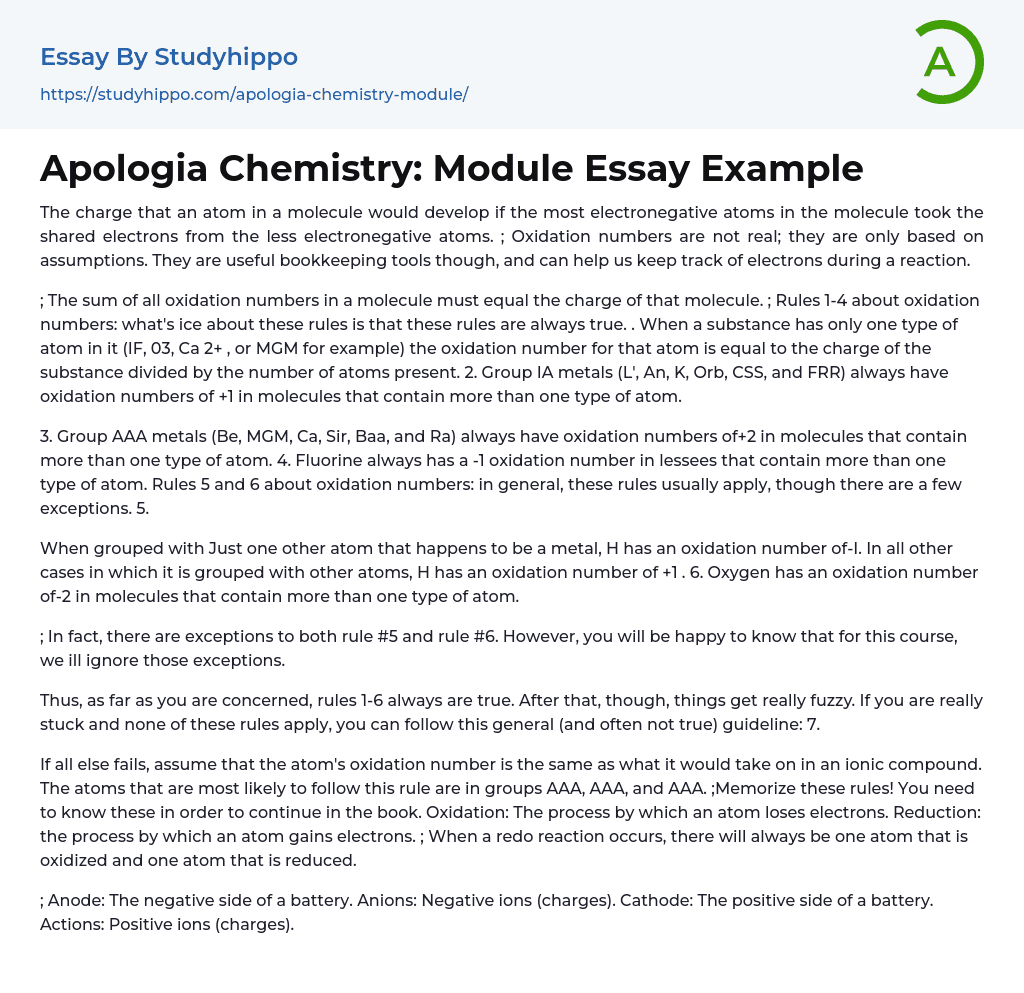The charge that an atom in a molecule would develop if the most electronegative atoms in the molecule took the shared electrons from the less electronegative atoms. ; Oxidation numbers are not real; they are only based on assumptions. They are useful bookkeeping tools though, and can help us keep track of electrons during a reaction.
; The sum of all oxidation numbers in a molecule must equal the charge of that molecule. ; Rules 1-4 about oxidation numbers: what's ice about these rules is that these rules are always true. . When a substance has only one type of atom in it (IF, 03, Ca 2+ , or MGM for example) the oxidation number for that atom is equal to the charge of the substance divided by the number of atoms present. 2.
...Group IA metals (L', An, K, Orb, CSS, and FRR) always have oxidation numbers of +1 in molecules that contain more than one type of atom.
3. Group AAA metals (Be, MGM, Ca, Sir, Baa, and Ra) always have oxidation numbers of+2 in molecules that contain more than one type of atom. 4. Fluorine always has a -1 oxidation number in lessees that contain more than one type of atom. Rules 5 and 6 about oxidation numbers: in general, these rules usually apply, though there are a few exceptions. 5.
When grouped with Just one other atom that happens to be a metal, H has an oxidation number of-I. In all other cases in which it is grouped with other atoms, H has an oxidation number of +1 . 6. Oxygen has an oxidation number of-2 in molecules that contain
more than one type of atom.
; In fact, there are exceptions to both rule #5 and rule #6. However, you will be happy to know that for this course, we ill ignore those exceptions.
Thus, as far as you are concerned, rules 1-6 always are true. After that, though, things get really fuzzy. If you are really stuck and none of these rules apply, you can follow this general (and often not true) guideline: 7.
If all else fails, assume that the atom's oxidation number is the same as what it would take on in an ionic compound. The atoms that are most likely to follow this rule are in groups AAA, AAA, and AAA. ;Memorize these rules! You need to know these in order to continue in the book. Oxidation: The process by which an atom loses electrons. Reduction: the process by which an atom gains electrons. ; When a redo reaction occurs, there will always be one atom that is oxidized and one atom that is reduced.
; Anode: The negative side of a battery. Anions: Negative ions (charges). Cathode: The positive side of a battery. Actions: Positive ions (charges).
- Organic Chemistry essays
- Acid essays
- Calcium essays
- Chemical Bond essays
- Chemical Reaction essays
- Chromatography essays
- Ethanol essays
- Hydrogen essays
- Periodic Table essays
- Titration essays
- Chemical reactions essays
- Osmosis essays
- Carbohydrate essays
- Carbon essays
- Ph essays
- Diffusion essays
- Copper essays
- Salt essays
- Concentration essays
- Sodium essays
- Distillation essays
- Amylase essays
- Magnesium essays
- Acid Rain essays
- Oxygen essays
- Atmosphere essays
- Coral Reef essays
- Desert essays
- Earth essays
- Ocean essays
- Lake essays
- Sea essays
- Biodiversity essays
- Natural Environment essays
- Forest essays
- Soil essays
- Water essays
- Rainbow essays
- Ecosystem essays
- Volcano essays
- Wind essays
- Forestry essays
- Bottled Water essays
- Agriculture essays
- Albert einstein essays
- Animals essays
- Archaeology essays
- Bear essays
- Biology essays
- Birds essays




